Chubb Water Damage Coverage Overview

Chubb offers comprehensive water damage protection through their Overland Water Coverage, which can be added to homeowner’s policies. This coverage goes beyond standard policies to protect against various water-related risks. Chubb, founded in NYC in 1882, is a global leader in property and casualty insurance. With operations in 54 countries and territories, Chubb provides commercial and personal property and casualty insurance, personal accident and supplemental health insurance, reinsurance, and life insurance. In 2022, Chubb reported $43.2 billion in net premiums written. Founded in NYC: 1882 Website: www.chubb.com Headquarters Zürich, Switzerland Phone Number 1-800-532-4822 NYSE Symbol CB Types of Water Damage Covered Chubb’s water damage coverage is designed to protect homeowners from a wide range of water-related incidents. This includes damage from internal sources such as burst pipes, leaking appliances, and overflowing fixtures, as well as external threats like flooding and severe weather. The policy also covers water damage resulting from firefighting efforts. Chubb’s comprehensive approach ensures that homeowners are protected against both common and unexpected water-related risks. Get Assistance with Chubb insurance claim and restoration following Damage Key Features of Chubb’s Water Damage Coverage Chubb’s water damage coverage is known for its comprehensive nature and customer-centric approach. The policy typically includes replacement cost coverage for both the home structure and its contents, often without depreciation. Chubb also offers coverage for temporary living expenses if the home becomes uninhabitable due to water damage. Additionally, their policies may include provisions for preventive measures and unique home features, reflecting Chubb’s commitment to tailored insurance solutions. Claims Process and Customer Service Chubb is recognized for its efficient claims process and high-quality customer service. According to Chubb’s internal customer satisfaction surveys reports, a significant majority of Chubb clients express satisfaction with their claim experiences. Customers going through NYTDR report maximum claim assistance coverage approvals. What to Do When You Have Water Damage NYTDR’s Guidance for Chubb Insurance Claims NYTDR has extensive experience supporting clients in navigating the insurance process with Chubb on numerous water damage claims. Our team is well-versed in Chubb’s processes and requirements, allowing us to effectively assist customers throughout the entire claims and restoration journey. From initial damage assessment to the final stages of renovation, NYTDR provides comprehensive support to ensure a smooth and satisfactory resolution for Chubb policyholders. NYTDR’s Water Damage Restoration Services Customer Testimonials “We had a leak that damaged 1/2 of our living room flooring. NYTDR did an amazing job working with our insurance company and then completely restoring half of the floor. You cannot tell at all where they refinished one half vs the other half that was not damaged. On top of that they did it really fast! Great job and I would highly recommend them to anyone!” Andrew Google FAQ’s
Can a Wet Basement Be Fixed?
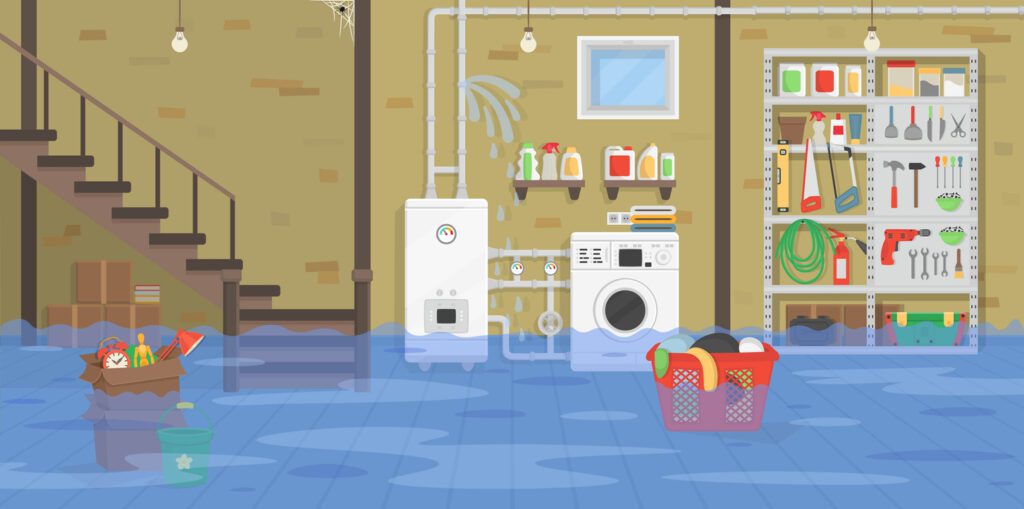
A wet basement is a common problem for homeowners, but the good news is that it can almost always be fixed! Ignoring moisture in your basement can lead to serious issues like mold growth, structural damage, and decreased property value. Let’s dive into why basements get wet, how you can address the issue, and what steps to take to keep your basement dry for good. Why Do Basements Get Wet? Basements are prone to water issues because they are below ground level, making them susceptible to: How Can a Wet Basement Be Fixed? Fixing a wet basement requires identifying the source of the problem and applying the right solution. Here are some effective strategies: When to Call a Professional While some fixes like regrading or sealing small cracks can be DIY projects, larger issues often require professional expertise. Consider calling a basement waterproofing specialist if: Preventing a Wet Basement in the Future Once your basement is dry, keep it that way by: Conclusion: A Dry Basement is Possible A wet basement is not a lost cause. By identifying the source of the problem and applying the right solutions, you can restore your basement to a dry, usable space. Whether you need minor repairs or a complete waterproofing system, taking action now will save you headaches (and money) in the long run. If you’re dealing with a wet basement, NYTDR can help. Our team of experts specializes in identifying the cause and providing tailored solutions to keep your home safe, dry, and comfortable. Contact us today and schedule a free-of-charge consultation!
Top Reasons Behind Leaks in NYC Apartments
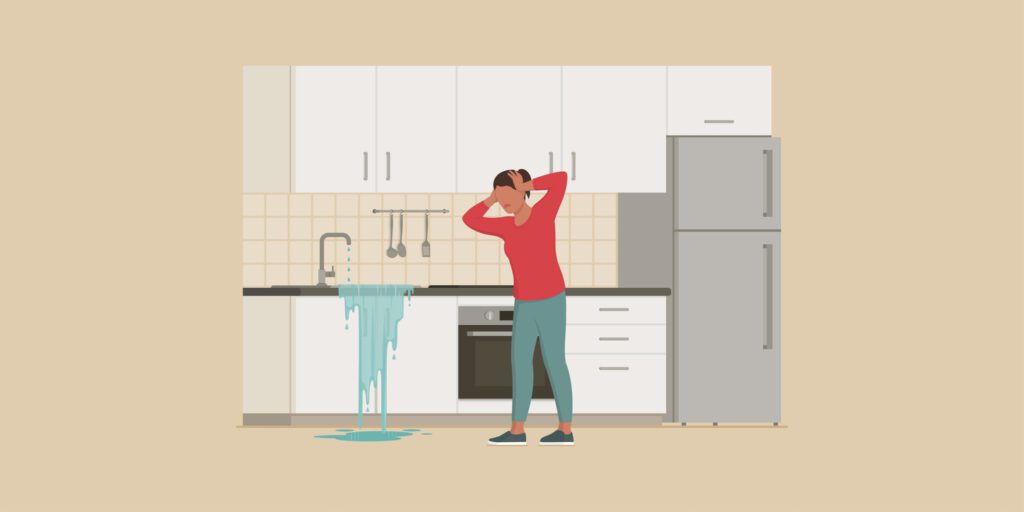
Water leaks are a common nuisance in New York City apartment buildings, often leading to significant structural damage if not addressed promptly. Here’s a look at the most frequent causes of these leaks and how residents and building managers can stay vigilant. 1. Aging Plumbing Systems In many NYC apartment buildings, especially older ones, pipes wear out over time. Rust, corrosion, and mineral buildup can lead to cracks and leaks. Routine inspections and timely upgrades are essential to prevent issues stemming from outdated plumbing. 2. Poor Weatherproofing Extreme weather events and fluctuating temperatures place considerable strain on building exteriors. When weatherproofing fails, moisture can seep into walls, ceilings, and foundations, eventually causing water damage inside the apartments. 3. Faulty Roofing Old, damaged, or poorly maintained roofs are a frequent cause of leaks. Heavy rain, snow, and seasonal changes can exacerbate any weak points in the roofing, allowing water to find its way into apartments, especially on upper floors. 4. Leaking Windows and Doors Windows and doors that aren’t sealed correctly can let rainwater into apartments. Poorly installed or worn-out seals, frames, and weatherstripping are common culprits, especially during intense weather conditions. 5. HVAC System Malfunctions Heating, ventilation, and air conditioning systems are often overlooked as sources of leaks. Blocked drains, clogged filters, or faulty condensate pumps can lead to water buildup and, ultimately, leaks in walls or ceilings. 6. Overflowing Drains and Blocked Gutters Gutters and drainage systems are meant to direct water away from the building. When they become clogged or misdirected, water may overflow and seep into apartment walls, causing leaks that go unnoticed until the damage is extensive. 7. Tenant-Related Issues Sometimes, leaks arise from tenant actions, such as overflowing bathtubs or sinks, improper installation of appliances, or accidental damage to pipes during renovations. Communication and proactive maintenance are key to preventing tenant-related leaks from escalating. Preventative Tips for Leak-Free Apartments Leak prevention in NYC apartment buildings is a collaborative effort between tenants, property managers, and building maintenance teams. Regular inspections, prompt repairs, and clear communication can help minimize the risk and impact of leaks. Addressing Water DamageWe addressed all the top reasons behind leaks in NYC Apartments, If you suspect a leak or have experienced water damage, it’s essential to act quickly. Contact NYTDR, which specializes in water damage restoration and helps NYC apartment buildings recover and prevent future issues.
Water Damage Restoration Checklist: What We Need to Know
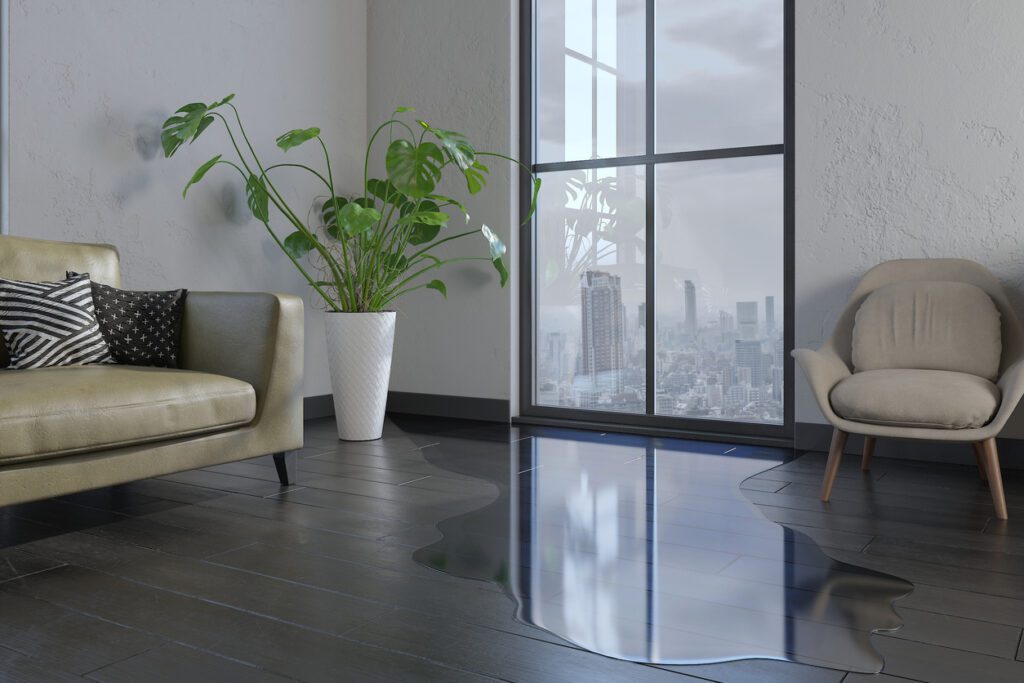
At first, when we talk about water damage restoration, we should consider that water damage can happen unexpectedly due to a burst pipe, heavy rain, or a malfunctioning appliance. Acting quickly can help minimize damage and get your home back to normal as soon as possible. Follow this comprehensive checklist to ensure you handle the situation efficiently and effectively. 1. Ensure Safety First Your first priority should be your own safety and that of your family. If the damage is severe or involves contaminated water, consider evacuating the property until it is safe. Be cautious of electrical hazards; if there is significant water accumulation, shut off the power in affected areas to prevent electric shock. 2. Stop the Water Source If possible, locate the main water shut-off valve and turn it off to stop water flow. Controlling the source of water will help limit the extent of the damage. 3. Document the Damage Before any cleanup or repairs, take photos and videos of the water damage. Document everything—walls, floors, furniture, and personal belongings. This evidence will be essential when filing your insurance claim. 4. Contact a Professional Water Damage Restoration Service After documenting the damage, reach out to your homeowners’ insurance company to begin the claims process. Insurance policies often cover water damage, but navigating the paperwork can be complicated. This is where NYTDR steps in, offering expert guidance through insurance claims while handling the restoration process. Our team will provide a comprehensive assessment, handle all communications with your insurer, and manage the entire restoration process from start to finish. Acting quickly by involving both your insurer and NYTDR ensures the process is streamlined and stress-free, with professionals managing the restoration and insurance paperwork. 5. Remove Standing Water Standing water can quickly lead to further damage and mold growth. Use a wet/dry vacuum, mop, or towels to start removing water. In large-scale flooding situations, NYTDR professionals will handle water extraction using industrial-grade pumps and vacuums to remove water quickly and efficiently. 6. Begin Drying the Area Once standing water is removed, it’s time to dry out. Open windows, use fans, and run dehumidifiers to reduce moisture. NYTDR’s drying equipment can help accelerate this process, ensuring that all areas—including behind walls and under floors—are properly dried. 7. Inspect for Mold Mold can begin to grow within 24 to 48 hours after water damage. Thoroughly inspect affected areas, especially hidden spots like behind walls or under carpets. If you detect any mold, immediately notify NYTDR, as professional remediation is necessary to ensure your home remains safe. 8. Remove Damaged Items Assess the damage to personal belongings, such as furniture, electronics, and textiles. Move any damaged items to a dry, ventilated area for evaluation. Items that can’t be saved may need to be discarded, while others might be salvageable through proper cleaning and drying. 9. Begin Restoration and Repairs Once your home is dry and safe, it’s time to begin the restoration process. NYTDR will assist in repairing walls, replacing flooring, and addressing any structural damage. It’s essential to hire a licensed contractor or restoration professional to ensure the repairs are completed correctly and meet safety standards. 10. Prevent Future Water Damage After restoring your home from water damage, take steps to prevent future water damage: Why You Should Choose NYTDR for Your Water Damage Restoration Water damage restoration is a complex process, and handling it without professional help can lead to further damage or missed issues like mold. With experience in handling all levels of water damage, from minor leaks to major floods, NYTDR takes the burden off homeowners by managing every step of the restoration process. Final Thoughts Water damage is stressful, but with the right steps, you can minimize its impact and restore your home to its original state. Following this checklist ensures you’re taking the proper actions to protect your property and your family. If you’re facing water damage, don’t wait! Contact NYTDR immediately for expert assistance. Our team will handle everything—from water extraction to complete restoration—giving you peace of mind during a challenging time.
Keeping Cool and Staying Dry: Tips to Prevent HVAC Leaks in NYC Apartments

As the summer heat intensifies, keeping your NYC apartment cool becomes a top priority. However, it’s equally important to ensure that your HVAC system is running smoothly to avoid any unwanted water leaks. HVAC leaks can cause significant damage, leading to water seeping into downstairs neighbors’ apartments and potentially buckling your beautiful wood floors. At NYTDR, we’re here to help you stay cool and dry this summer with some essential tips. Understanding the Risks of HVAC Leaks HVAC systems work by removing heat and humidity from your home. In doing so, they produce condensation, which is typically drained away through a series of pipes. If these pipes become clogged or damaged, water can leak into your apartment. Here are some common issues that can lead to HVAC leaks: Preventing HVAC Leaks To prevent HVAC leaks and keep your apartment cool without the stress of potential water damage, follow these tips: 1. Regular Maintenance Schedule regular maintenance for your HVAC system. A professional technician can inspect and clean the system, ensuring all components are in good working order. Regular check-ups can identify potential issues before they become major problems. 2. Clean the Condensate Drain Line Make sure the condensate drain line is clear. You can do this by pouring a cup of bleach mixed with water down the drain line every few months. This helps to prevent mold and algae buildup, which can cause clogs. 3. Check for Leaks Periodically check your HVAC system for any signs of leaks. Look for water around the unit and inspect the drain pan. If you notice any water, it’s a sign that something may be wrong. 4. Monitor the Evaporator Coils Keep an eye on the evaporator coils to ensure they are not freezing. If you notice ice buildup, turn off the system and let it thaw. Contact a professional to inspect and resolve the underlying issue. 5. Ensure Proper Insulation Make sure your HVAC unit and the surrounding pipes are properly insulated. This can help prevent condensation and reduce the risk of leaks. Handling HVAC Leaks If you do experience an HVAC leak, it’s important to act quickly to minimize damage: Conclusion Keeping your NYC apartment cool during the hot summer months doesn’t have to come with the risk of HVAC leaks. By taking proactive steps and staying vigilant, you can enjoy a comfortable home without the worry of water damage. Remember, regular maintenance and quick action are key to preventing and addressing HVAC leaks. If you need assistance, NYTDR is always here to help with your restoration needs. Stay cool, stay dry, and enjoy your summer!
Common Home Damage Scenarios
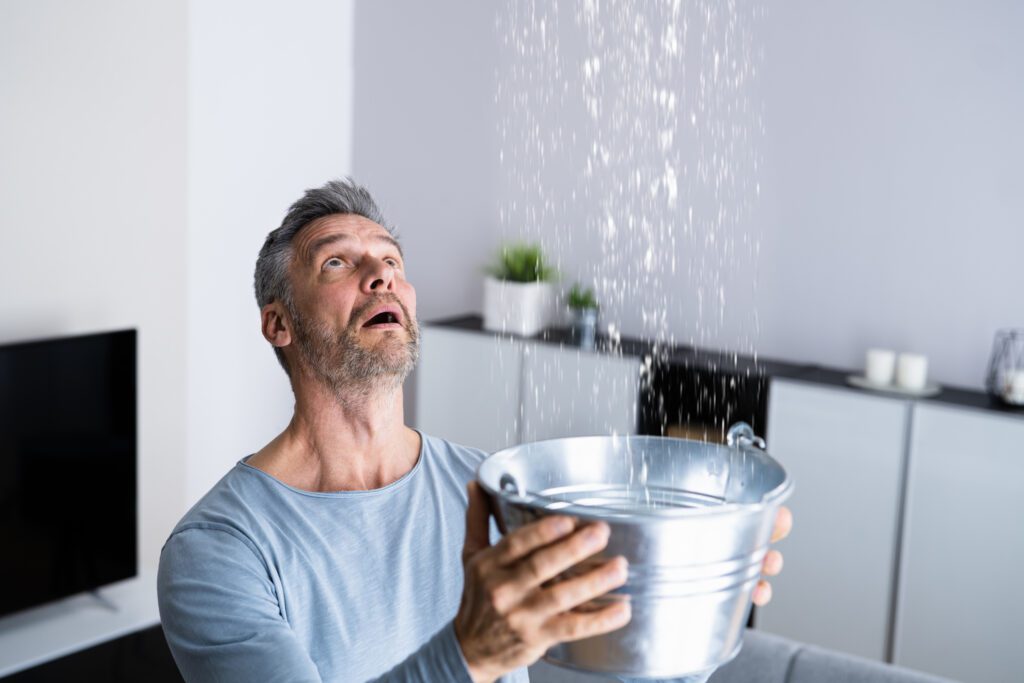
Home damage can strike unexpectedly, leaving homeowners grappling with the aftermath. At New York Total Damage Restoration (NYTDR), we believe that being informed is the first step to preparedness. In this blog post, we’ll shed light on common home damage scenarios, exploring the nuanced restoration processes and insurance claim considerations associated with each. 1. Water Woes: Water leaks and flooding are among the most prevalent home damage issues. Whether it’s a burst pipe, a faulty appliance, or severe weather-related flooding, the impact can be extensive. We’ll delve into the immediate steps homeowners should take, the importance of swift water extraction, and how comprehensive drying techniques are crucial to prevent long-term structural damage. 2. Ravages of Fire: Fire damage can be devastating, leaving homes in disarray. From assessing the extent of the damage to addressing smoke residue and structural concerns, NYTDR will guide homeowners through the complexities of fire damage restoration. We’ll also discuss the emotional toll of such incidents and the importance of a compassionate and professional restoration approach. 3. Nature’s Fury – Natural Disasters: New York City is not immune to the forces of nature. Whether it’s a hurricane, earthquake, or severe storms, natural disasters can wreak havoc on homes. Explore how NYTDR is equipped to handle the aftermath of such events, emphasizing the urgency of a rapid response and the comprehensive restoration measures needed to bring homes back to their pre-disaster state. 4. Mold Menace: Often a consequence of water damage, mold poses its own set of challenges. We’ll delve into the health risks associated with mold, the importance of thorough mold remediation, and how NYTDR employs advanced techniques to eradicate mold and prevent its recurrence. 5. Storm Surge and Wind Damage: Severe weather events can lead to storm surges and wind damage, particularly in coastal areas. Explore how NYTDR assesses structural damage, addresses water ingress issues, and undertakes necessary repairs to restore homes battered by the elements. 6. Insurance Claims Navigation: Each type of home damage scenario requires a tailored approach to insurance claims. Our blog will provide insights into the documentation needed for different scenarios, communication tips with insurance providers, and how NYTDR collaborates with homeowners to ensure a smooth and transparent claims process. At NYTDR, as experienced water damage company in NYC, we understand that no two home damage scenarios are alike. By providing homeowners with knowledge about the intricacies of restoration following water leaks, fire damage, natural disasters, and more, we aim to empower them to make informed decisions in times of crisis. Stay tuned for our upcoming posts as we continue to unravel the complexities of home restoration, offering a beacon of guidance for homeowners in their time of need.
7 Steps to Tackle Leaks in Your NYC Apartment

Living in the heart of the Big Apple is exhilarating, but when leaks make an unexpected appearance in your bathroom or kitchen, it can feel like a soggy curveball. Fear not! New York Total Damage Restoration (NYTDR) is here with a roadmap to help you navigate the watery wilderness. Let’s dive into 7 steps to conquer leaks and reclaim the sanctity of your NYC apartment. Locate and Tame the Leak: The first order of business is to play detective. Identify the source of the leak – it could be a sneaky pipe, a leaking HVAC system, a rebellious faucet, or an elusive culprit. Once found, take immediate action to contain the leak. Turn off the water supply if necessary to prevent further trouble. Document the Drama: Before the restoration heroes arrive, document the damage. Snap some photos or a quick video. This visual record will not only help us tailor our restoration plan but can also serve as valuable evidence when dealing with insurance later on. Power Down the Electricity: Safety first! Water and electricity don’t play well together. As a precautionary measure, turn off the electricity in the affected area to steer clear of any potential hazards. It’s a small step that goes a long way in keeping you, your home, and our team safe. Clear the Stage: Now that the leak is contained, clear the stage for our restoration maestros. Move belongings and furniture away from the affected area. This not only safeguards your valuables but also gives our team the space they need to work their restoration magic. NYTDR Takes the Spotlight: Time to let the pros do their thing! NYTDR’s seasoned experts will swoop in, assess the damage, coordinate with your insurance, and craft a personalized restoration plan. From water extraction to structural repairs and nipping mold in the bud – we’ve got the playbook. Stay in the Know: Waiting for your haven to be restored can be a nail-biter. Fear not! NYTDR believes in keeping you in the loop. Expect regular updates on the progress – we’re all about transparency and ensuring you have the peace of mind you deserve. Remember, leaks might be the uninvited guests in your NYC apartment, but with NYTDR on speed dial, they won’t overstay their welcome. From detection to restoration, consider us your one-stop shop for turning leaks into tales of triumph. Ready to conquer that drip? NYTDR is just a call away, because in the city that never sleeps, neither do leaks!
The Human Touch: How NYTDR Supports Homeowners Throughout the Restoration Journey

When disaster strikes, it leaves homeowners feeling overwhelmed and vulnerable. Whether it’s a fire, flood, or other unforeseen calamities, the emotional toll can be immense. At NYTDR (New York Total Damage Restoration), we understand that restoring a damaged home is not just about fixing physical structures; it’s about rebuilding lives and providing a sense of security during challenging times. In this blog post, we delve into how NYTDR extends a compassionate and supportive hand to homeowners throughout the restoration journey, making the process as smooth and reassuring as possible. Empathy at the Forefront: At NYTDR, we believe that empathy forms the bedrock of our services. Our team of restoration experts understands the distress and upheaval that homeowners face when their homes suffer damage. As soon as we receive a call for assistance, our priority is to reach out to the affected homeowners promptly. Our compassionate customer support team listens attentively, offering comfort and reassurance, while swiftly mobilizing the restoration crew to assess the situation. Clear Communication: Clarity and transparency are vital when dealing with homeowners during distressing times. Our dedicated project managers take the time to explain the restoration process step-by-step, providing homeowners with a clear understanding of what to expect. From the initial assessment to the final touches of the restoration, we keep homeowners informed about the progress and any potential challenges that may arise. Personalized Solutions: Every home and homeowner is unique, and we recognize that a one-size-fits-all approach does not work in the restoration process. At NYTDR, we tailor our solutions to meet the specific needs and preferences of each homeowner. We take into account factors such as budget, timelines, and personal belongings, ensuring a customized restoration plan that aligns with the homeowners’ requirements. Emotional Support: Home damage can evoke a range of emotions, from frustration and anxiety to grief and sadness. Our restoration experts are not only skilled professionals but also compassionate individuals who understand the emotional toll of such events. We are there to lend a listening ear, providing emotional support to homeowners as they navigate the restoration journey. Minimizing Disruption: Home restoration projects can be disruptive to daily life, and we strive to minimize this disruption as much as possible. Our team works efficiently and swiftly, prioritizing tasks to get homeowners back to their regular routines as soon as feasible. Throughout the restoration process, we take care to maintain a clean and safe working environment, respecting the homeowners’ space and belongings. Going the Extra Mile: At NYTDR, we take pride in going above and beyond to exceed our clients’ expectations. We understand that restoring a home is not just about fixing the visible damage but also addressing hidden issues that may arise during the process. Our experts conduct thorough inspections to identify and resolve potential problems, ensuring a comprehensive and long-lasting restoration. Conclusion: At NYTDR, we believe that providing the human touch is essential in delivering exceptional home restoration services. Beyond repairing damaged structures, our mission is to bring hope, compassion, and support to homeowners during times of crisis. By placing empathy and clear communication at the forefront of our services, we strive to alleviate the stress of the restoration journey, allowing homeowners to focus on rebuilding their lives and embracing a brighter future.
How to Repair and Prevent Bathroom Water Damage
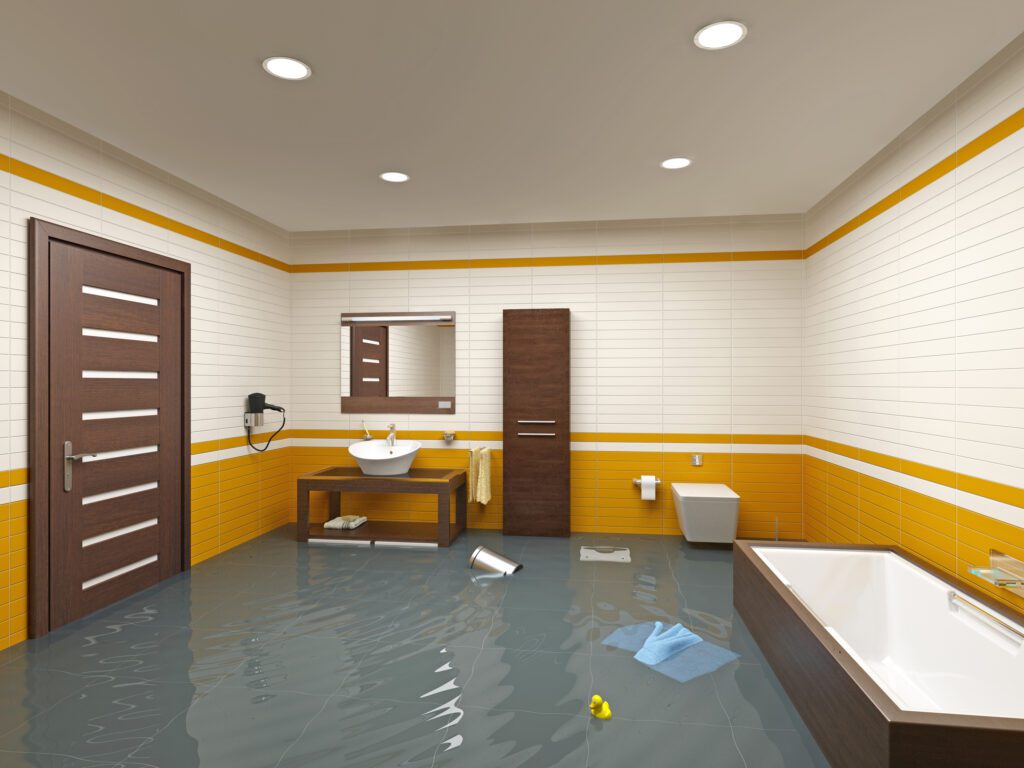
There’s no doubt that water is the key to life, but this theory doesn’t apply to the inside of your home. The damage can quickly disrupt your life, making your home a health hazard. Water damage is unique as it builds up and worsens over time, eventually distorting frames and floors, cracking tiles and sealant, and softening ceilings and walls as mold thrives. Excess water seeps into tiny cracks and pores, so even small amounts can cause irreversible structural damage with time. Such damages are widespread in bathrooms where water and moisture are perpetually present. We often overlook the process until significant damage, like cracks and bulges, catches our attention. If you face water damage in your bathroom, this article demystifies how to repair and prevent recurring damage. Recognizing Water Damage in Your Bathroom The absence of obvious evidence of water damage doesn’t mean it’s not present. Some warning signs can hint at underlying issues since the damage lurks under floors and behind walls. If you notice one or more of these signs, there’s a high chance your bathroom has water damage: § Soft or Spongy Floor One of the earliest signs of water damage in your bathroom is a soft spongy feel when you step on the floor. Most subfloors consist of a plywood subfloor which is highly water-absorbent. The plywood absorbs water, which causes the wood to soften and swell. This damage is most common on the floor near toilets and bathtubs. § Moldy or Musty Smell A moldy or musty smell in your bathroom can indicate water damage. Inspect your bathroom to identify the source if you notice such a smell. § Stubborn Mold or Fungi If mold keeps re-growing after cleaning it, you may have some underlying water damage. § Damaged Paint, Drywall, or Tile Issues Water can move a long distance through the subfloor or walls, so the leak may be further than where the visible damage appears. Look for blisters and damaged or peeling paint on your walls. Moisture seeping behind your walls can also cause the drywall to bubble or warp and tiles to loosen. How To Repair A Water-Damaged Bathroom If you notice any signs of water damage, it’s best to address the issue quickly. Procrastinating could cause irreversible damage and make your home a health hazard for your loved ones. 1. Thorough Mold Inspection The first step when dealing with water damage in your bathroom is conducting a comprehensive mold inspection. You can identify mold in your subfloor or drywall by stains on surfaces and walls and a musty smell. If you think the signs of water damage on your floor or walls are due to a more extensive mold infestation, the best move is to work with qualified water damage experts like NYTDR. These experts have the proper knowledge, skills, experience, gear, and tools to conduct thorough inspections safely. They will handle the damaged items and repair the damage, leaving your bathroom in a better state than before. 2. Room Preparation Once the experts remove the mold, you can prepare materials for the repairs and renovation. You can start by shutting off the main water valve to avoid causing further damage during the repair process. If you have furniture like a vanity and portable items, it’s best to remove them from the water-damaged bathroom. Working with industry experts with experience in bathroom restoration is a great way to save on restoration costs for damaged items like your bathroom vanity. 3. Fixing the Drywall If the water damage has affected your bathroom’s structural integrity, ensure you contact certified contractors to help with the renovation. You can DIY the repair using a keyhole saw and hammer for minor damages. You can cut the affected areas in a rectangular or circular shape to simplify the patching process. You’ll need some clips to hold up the new pieces as you secure them with joint compound and tape. Once the patches dry, you can sand and paint them to match the surrounding drywall. 4. Repairing the Floor Once the drywall repairs are complete, the next step is clearing the debris to prepare the bathroom floor. Rather than removing the damaged tiles, vinyl, or flooring and exposing protruding screws, nails, and baseboards, let experienced professionals handle this next step. The team will handle the removal and replacement of any type of flooring. 5. Installing the Fixtures With your floor and walls all done, it’s time to install new fixtures like toilets, cabinetry, sinks, shower heads, and any other items you need. If you fancy new lighting or smart devices, this is your chance to build your dream bathroom. How to Prevent Water Damage in Your Bathroom Although it can be challenging to keep your bathroom dry, you can prevent further or future water damage by: § Repairing or Replacing Missing, Cracked, or Broken Tiles Water can quickly seep through damaged tiles on your walls and floors, causing water damage. Your bathroom restoration should include replacing such tiles to avoid undoing the repair work. § Regularly Inspecting the Floor for Excess Water. It’s essential to keep checking the bathroom floor to ensure all the water drains away after using the shower or bathtub. Placing a bathmat on the floor can help absorb the excess water. § Regularly Checking for Signs of Leakage It’s best to schedule regular inspections to check for signs of leaks like moldy walls or ceilings, discoloration, and paint bubbling. You can feel the walls for soft spots and walk barefoot across your floor. Remember to check areas under sinks and vanities where water could pool. § Inspecting the Grout and Sealant Sealants and grout ensure that bathroom fittings like tiles, bathtubs, and shower cubicles remain in place. Regular exposure to heat and moisture can cause wearing and cracking, which allows water to seep through. You can clean the area and remove the damaged grout if you notice extensive damage. Allow the area to dry well before installing a new layer to prevent
How to Check for Water Damage in Your Apartment

Are you wondering if there is water damage in your apartment? Water damage is a common problem that can cause major long-term issues. Knowing the signs and how to check and prevent it will help keep your home healthy and potentially save you money. Let’s explore the top causes of water damage, how to identify signs of water damage, and the steps to check water damage in your apartment- including hidden areas. Let’s get started! Common Causes of Water Damage in a Home Water damage in a home can be due to many different factors. For example, leaky pipes, leaky AC Unit, and overflowing sinks are the most common causes of water damage. Natural disasters and heavy rains can cause floods that lead to water damage. Problems such as faulty gutters or downspouts can also allow rainwater to enter your home. Such issues cause significant water damage over time. Finally, poor home maintenance can also cause severe water damage. For instance, failing to clean out gutters regularly or not checking for signs of leaking pipes can also lead to costly repairs due to water damage. It’s best to keep all these causes in mind when trying to prevent any potential long-term issues related to water damage in your home. Signs of Water Damage on Walls Water damage on walls can be hard to spot if you don’t know what you are looking for. One way to tell is by looking for discoloration or staining on the paint and wallpaper. Such signs may indicate that there has been a leak somewhere in your home. Bubbling or peeling paint strongly suggests leakage in the pipes beneath the walls. The leaking water seeps through the paint and wall, causing the bulge. You should also check for signs of mold growth, as this indicates that moisture in your walls could lead to further damage over time. If you notice any bulging or soft spots on the walls, it could also indicate water buildup behind them. For instance, you can press drywall in areas you suspect to see if it softened. If the area caves in, you likely have water damage inside the wall, even if the outside looks normal. Finally, keep an eye out for any cracking or warping due to moisture seeping from outside sources such as rainwater or flooding. These signs are severe and require immediate attention to prevent further damage. Ensure you seek professional assistance immediately from experienced remodeling contractors such as NYTDR. Such experts understand how important it is to identify potential water damage issues early. They’ll address them quickly and effectively with minimal disruption and cost. A team will visit your home for a comprehensive inspection. It includes checking for signs inside walls, floors, ceilings, and outside gutters and downspouts. They’ll check all areas where structural integrity can easily get compromised by hidden leaks over time. Compromised integrity can lead to costly repairs down the line. With expertise in local regulations, you can count on the experts to ensure your home remains safe and compliant with all applicable laws. Signs of Water Damage on Floors and Ceilings When it comes to water damage on floors and ceilings, the most common telltale sign is discoloration or staining. The discoloration could be due to a leaky pipe or a flooding issue that has gone unnoticed for some time. Another indication of water damage is the warping or buckling of the flooring. If you notice warping, it may be a sign of too much moisture in your home for an extended period that causes the wood to swell up. You also want to look for any visible mold growth, which could indicate a moisture problem. Finally, if you see any cracks in your ceiling or walls near the water pipes, this could indicate that something needs attention before further severe damage occurs. Other signs of water damage in your apartment include: § Damp Odor Some symptoms of water damage are not visual. One of the most noticeable non-visual signs is your home’s strong mildew or damp smell. Smelling mold in a room often indicates water damage within the walls. Although most older homes naturally have a slightly damp smell, it should be a subtle odor. If you notice a strong odor in any room, it’s best to have a professional conduct a thorough investigation. § Unusual Sounds Strange as it may sound, it’s possible to hear water leaks in your apartment. One of the simplest ways to check for signs of a leak is by listening. For instance, you can switch off all electronics in your home on a rainy day and stand in the room where you suspect a leak for a few minutes. When listening to the rain, it should sound like the water is sliding off the roof. Dripping water has a different sound than sliding water. Checking Water Damage in Your Home or Apartment If you live in an apartment, it’s crucial to stay aware of potential water damage. You can take several steps to check for signs of water damage and take action before the issue worsens. First, inspect any exposed pipes or fixtures for signs of leaking or dripping. If there is evidence of a leak, contact your landlord immediately so they can arrange repairs from qualified professionals. Also, inspect ceilings and walls near plumbing fixtures. Check for discoloration or staining, which could indicate a hidden leak that may not yet be visible. Finally, if you have carpets in your unit, ensure you periodically check underneath them for signs of dampness. It could indicate moisture seeping up from the floor below. Taking these simple steps will help ensure that you identify any potential problems with water damage in your apartment early on and to address them appropriately. If you’re a homeowner, you likely have a homeowners insurance policy. The home insurance policy should cover the costs of repairing the affected areas and replacing the damaged items in your home. Most renters also have a
